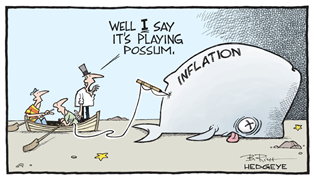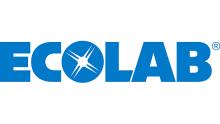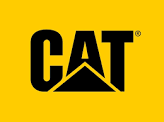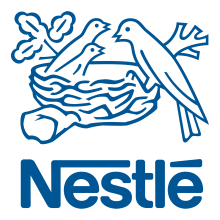Playing Possum?
The recent surge and intensity of inflation has been a major topic of discussion and focus in this year’s first and second quarters. Our Second and Third Quarter Perspectives last year identified the potential for inflation given the trajectory and scale of the fiscal and monetary stimulus being employed by the U.S. government and Federal Reserve, respectively. These trends have been extended into 2021 with a concomitant increase in inflation. The Labor Department reported that consumer prices rose by 5% in May from a year ago, which represents the fastest pace in nearly 13 years. The core rate of inflation, which excludes volatile food and energy prices, rose 3.8%, the sharpest rise since June 1992.
The Federal Reserve noted that the recent increase in inflation has been powered from a combination of pent-up demand as consumers emerge after the pandemic as well as a shortage of labor and supply bottlenecks. Many businesses are raising wages as they struggle to hire people. Job openings reached 9.3 million in April, the highest number since tracking began in 2000. According to the National Federation of Independent Business, a trade association, 48% of small businesses indicated they raised average selling prices in May, the highest share since 1981.
The challenge facing investors is whether this inflation is transitory or enduring, such as the recurring inflation of the late 1960s and 1970s. After decades of nearly invisible inflation in the U.S. economy, many Americans have a scant acquaintance with what it feels like. Nearly half of the U.S. population was born after 1981, the last year of double-digit price increases. Persistent inflation would certainly have investment implications and negatively affect those particularly on fixed incomes.
The Fed’s narrative is that inflation is likely to be short-term as the reopening of the economy engenders a surge of pent-up demand. The jump in prices is correlated with increasing COVID-19 vaccinations, relaxed business restrictions, trillions of dollars in federal pandemic relief programs and ample household savings – all of which propelled consumer demand. Federal Reserve Chairman Jerome Powell argues that as spending patterns normalize after the pandemic, services, travel, and entertainment will consume a larger share of household expenditures, leading to a slowdown or even possible decline in durable goods consumption. Such actions will allow manufacturers to scale up production and close the supply-demand disequilibrium.
Inflation can be enduring if the supply-demand imbalance does not correct as readily as the Fed expects, and price increases become large or persistent enough that businesses and consumers begin to expect and demand higher prices and wages. The Fed’s traditional tools to combat inflation have been compromised by debt fueled growth of the last decade. The global debt-to-gross domestic product (GDP) ratio now surpasses the World War II peak for developed economies and is reaching new highs for emerging market economies. Fitch Ratings Inc. projects that in the U.S. the federal debt will approach 109% of GDP this year. If the Fed were to raise interest rates to combat inflation, it would raise the costs of servicing the debt, which in turn could – absent an increase in taxes – necessitate the assumption of even more debt.
Businesses that are well adapted to an inflationary environment are those with an ability to increase prices easily – even when there is excess capacity or demand is flat – without fear of material loss of market share or unit volume.
There is some evidence to support the Fed’s argument that inflation will not be able to maintain its pace for long. The headlines of year-over-year sharp increases are distorted by comparisons to deeply depressed prices from the early days of the pandemic. Some commodity prices, notably crude oil, are merely returning to pre-pandemic levels. At the same time, investors should be prepared if inflation is more persistent, particularly given the scale of government spending and monetary stimulus. The Administration is proposing a $6 trillion budget for fiscal 2022, about a third of which would be unfunded. Since last year, the Fed has been buying at least $120 billion a month of Treasury and mortgage bonds in an effort to keep interest rates low. In the last year and a half, the money supply has increased 31%. This easy money policy at some point could trigger more sustainable inflation depending on the Fed’s priorities.
What does higher inflation mean for stocks? The relationship between inflation and stock prices is complex and each stock will react differently according to the pricing power that the underlying company enjoys. Businesses that are well adapted to an inflationary environment are those with an ability to increase prices easily – even when there is excess capacity or demand is flat – without fear of material loss of market share or unit volume. These firms have barriers to entry or hold competitive advantages such as production scale, brand premiums, superior technology or distribution networks and as a result will be able to navigate more easily than weaker companies. Some businesses with pricing power may elect to not pass on price increases in an effort to gain market share and new customers. In previous inflation cycles, Walmart Inc.’s scale and low-cost model has enabled it to use rising prices across the industry to create a larger pricing gap between it and its competitors.
Assets with short durations – positive cash flows collected in the beginning years of owning the asset – generally outperform those that rely on returns far in the future. Long-term bonds will be more sensitive to inflation than short-term bonds. Something similar applies to stocks. Growth stocks that bet on larger profits far in the future look less attractive in a rising-rate environment than value stocks that tend to have more established cash flows. A stock portfolio can act as a hedge against inflation in the long run, if companies owned are able to adjust their prices to incorporate higher input costs or switch to alternative inputs in delivering their products and services. Whether inflation is persistent or not, remaining invested in an actively managed, well diversified stock portfolio offers one of the best approaches to preserving the purchasing power of your investments.
June 17, 2021
COMPANY COMMENTS
Comments follow regarding common stocks of interest to clients with stock portfolios managed by Delta Asset Management. This commentary is not a recommendation to purchase or sell but a summary of Delta’s review during the quarter.
Honeywell International Inc. { HON }
Honeywell, one of the world’s largest industrial and manufacturing conglomerates, is organized into four diverse segments: Aerospace, Home and Building Technologies, Performance Materials and Safety and Productivity Solutions. The broad range of products enables the company to offset risk in any market or region with strength in another. In recent years, the company has benefited from strength in the global aerospace market, offsetting domestic U.S. market weakness and inflationary pressure.
Honeywell is creating and integrating extensive amounts of software to control processes, boost output, cut maintenance costs and improve reliability for itself and for its clients. It is leveraging this software technology across its massive industrial installed base. Honeywell is embedded in both mission critical operations – such as flight controls – and in customer operations through diverse offerings – such as warehouse automation and climate control. In aerospace, the company boasts one of the largest installed bases in the industry, including 25,000 engines, 36,000 auxiliary power units, 20,000 wheels and brakes and 20,000 flight management systems. This superior technology stems from its investment in research and development.
Honeywell allocates a high percentage of cash resources to research and development (R&D). R&D spending has averaged over 4.5% of revenues – roughly twice the industry average – and is targeted at high growth areas to enhance product attributes and differentiation. The U.S. government typically adds an additional 50% to the firm’s R&D funding for defense projects, which pushes spending to nearly 7% of sales.
Honeywell is creating and integrating extensive amounts of software to control processes, boost output, cut maintenance costs and improve reliability for itself and for its clients. It is leveraging this software technology across its massive industrial installed base.
In addition to new product offerings, Honeywell has become a much more efficient manufacturer over the past 10 years. A number of operating initiatives – Six Sigma, Honeywell Operating System, Functional Transformation, etc. – implemented since 2003 have pushed the company’s key operating metrics towards the upper end of the peer group. On a cumulative basis, the rewards have been transformative. By keeping costs such as labor relatively flat, the company generates operating leverage that magnifies returns. Since 2004, operating margins have grown from 7.6% to 21% in 2020.
Honeywell’s Aerospace segment, representing nearly 35% of sales, has competitive entry barriers. Once its products, which range from cockpit controls to engines, are integrated into an aircraft, it is very difficult for aircraft manufacturers to switch vendors as long as the aircraft is in use. This position provides a highly visible recurring revenue stream in the form of parts and maintenance service contracts.
Honeywell has been a cautious buyer of new businesses. It focuses on small, easy to integrate businesses that have the potential to deliver immediate and significant cost savings. Every acquisition must meet a highly specific checklist with an emphasis on integrating the business.
The company’s Chief Executive Officer is Darius Adamczyk who was chosen as President and CEO in 2017. He immigrated to the United States at age 11 without speaking English. Despite these challenges, he graduated from Harvard with a Master’s in Business Administration and began his career as an electrical engineer at General Electric Co. At Honeywell, he is focused on improving operating efficiencies, selling lower margin divisions and leveraging high margin businesses with a focus on internal growth.
Based on the financial characteristics outlined, we have assumed that Honeywell can grow its revenue at an average annual rate of over 3% through the next decade. At this pace of growth and given improved operating efficiency, we believe cash flow margins can average 25% during this period. Accordingly, based on the current stock price, our stock valuation model indicates a long-term annual rate of return of approximately 5.0%.
Ecolab Inc. { ECL }
Ecolab is the largest global provider of water, hygiene and energy technologies and service programs, providing services in over 170 countries to nearly 3 million customer locations. Its products and programs serve many different industries, such as food and beverage, hospitals, life sciences, hospitality and foodservice. Ecolab was founded in 1923 and is headquartered in St. Paul, MN.
Ecolab’s exposure to water has been primarily through acquisitions. The company provides chemicals, services and analytics to help commercial and industrial customers manage water quality, treat boiler and cooling water and manage and reduce wastewater. The company offers specialty chemicals that treat water and help improve production yields in oil and gas extraction. Ecolab’s water treatment programs serve global industries, including food and beverage, manufacturing, pulp and paper production, mining and energy. The company’s core strength of helping customers reduce, reuse and recycle water is becoming increasingly important as water potentially becomes scarcer longer term.
Ecolab’s water-treatment programs serve global industries, including food and beverage, manufacturing, pulp and paper production, mining and energy. The company’s core strength of helping customers reduce, reuse and recycle water is becoming increasingly important as water potentially becomes scarcer longer term.
The company’s oil and gas business has added cyclicality to Ecolab’s portfolio. Its energy segment is still recovering after several years of a difficult operating environment due to depressed oil prices. Long term, the company is positioned well in the industry with many advanced technologies and water treatment solutions required for energy sources, such as shale. From the reservoir to the refinery, the company’s chemical solutions touch almost every part of the oil and gas value chain.
In providing a comprehensive set of innovative cleaning, sanitizing and water treatment programs, products and services, the company pursues a Circle the Customer – Circle the Globe strategy. The company dwarfs its rivals in a highly fragmented market. Ecolab’s extensive and highly trained sales force has been a key contributor to strengthening and growing its leadership position in the industry. New customers over time are offered new products and solutions, thus expanding the relationship and adding incremental revenue. These customer relationships also provide valuable customer insight, which often leads to product innovation. The sales force stays in close contact with customers by visiting sites to ensure that the company’s products are working and being used properly. Salesmen are highly motivated with as much as 75% of compensation in the form of variable pay.
Many of the company’s products and services are complimentary to one another and across industries. There continues to be good cross-sell opportunities between legacy Ecolab and its water treatment services. Its water applications already service hotels, hospitals, commercial buildings and food and beverage customers. This customer overlap should enable Ecolab to further Circle the Customer by selling new products and services to established customers and vice versa.
The company employs over 1,200 scientists, engineers and technical specialists to develop products and services to improve hygiene, efficiency and product quality. The company’s core technologies include antimicrobials, dispensing and monitoring, environmental hygiene, polymers, water management and data analytics. Its research and development efforts resulted in development of a laundry disinfectant that kills the SARS-CoV-2 virus that causes COVID-19. As travel recovers, hotels well spend more for premium cleaning products to alleviate consumer concerns, which should benefit the company.
Based on its business attributes, we have assumed Ecolab can grow revenue at an average annual rate of just over 4% through the next decade. Given the consolidation of acquired businesses and expectations of improved European profitability, we believe cash flow margins will average approximately 24% during our forecast period. Using these assumptions and based on our cash flow model, Ecolab’s return on invested capital will average over 12.5% through our forecast period.
Comcast Corporation { CMCSA }
Comcast is the nation’s largest cable provider offering a range of information, entertainment and communication services to residential and commercial customers. The cable segment’s network is complete with video, high speed internet (HSI), voice as well as digital video and wireless services that can be accessed by 56 million homes and businesses in 39 states representing more than 40% of all U.S. households. The company’s NBC Universal business is a leading entertainment and media company that develops, produces and distributes news, sports and entertainment for global audiences.
On October 9, 2018, Comcast purchased U.K.-based satellite TV operator Sky for nearly $40 billion. Sky is one of Europe’s leading entertainment companies with a similar structure to Comcast. It primarily includes a direct-to-consumer business providing video, HSI, voice and wireless phone services as well as a content business operating entertainment networks: Sky News broadcast network and Sky Sports networks. The acquisition nearly doubles Comcast’s direct customer relationships to 52 million, provides broader distribution for NBCU and Sky owned programming and content and adds a multi-national digital video offering with Sky’s NOW TV. The acquisition expanded Comcast’s international revenue from 9% of total sales to 25%.
Comcast’s cable segment is mature with subscriptions for video declining; however, these declines are being more than offset by continued growth in high speed internet services. With its cable footprint built-out requiring only periodic upgrades, return on investment and free cash flow continue to increase. Video viewing options are fragmented with competitive forces such as Amazon, Google, Netflix and other technology companies offering online and mobile platforms to watch video. Comcast leads the cable industry in innovations and has aggressively responded to these new entrants by launching its own online and mobile offerings, such as X1, the company’s TV Everywhere platform, and its digital programming offering called Peacock.
Data consumption growth continues to increase the importance and value of Comcast’s faster pipe into homes and businesses.
A critical Comcast defense is its industry-leading internet speeds. With the continuing shift toward online and mobile video and gaming, internet speeds are vital to continuing to drive growth in its high margin HSI business. Comcast continues to add over one million customers per year to its HSI services. Data consumption growth continues to increase the importance and value of Comcast’s faster pipe into homes and businesses. Comcast’s network architecture allows it to add capacity to meet customer speed demands at a far lower cost than competitors. In addition, Comcast Business Services continues to be a high margin growth driver for the company. It is now a $10 billion business growing at a low double-digit pace. Future growth prospects in this segment hold promise with currently just a 15 to 20% market share and an estimated $20 to $30 billion market opportunity.
Comcast’s NBC Universal has experienced the success of a robust turnaround. Comcast has significantly improved this collection of businesses, which includes cable networks, NBC broadcast stations, movie studios and theme parks, providing adequate growth and good cash flow. Comcast is investing to transform the entertainment unit into a compelling multi-media juggernaut with the parent company’s ample capital, scale and digital know-how. Its central focus will be sports and top echelon theme parks. With investments in NASCAR, NCAA football, NFL football, the Olympics and Premier League soccer, it is betting it can boost fees and advertising. Sports are must-see live events, whether at home or digitally while on the go and still command premium ad rates.
Comcast has many positive attributes – including recurring, predictable cash flows – and competitive advantages – such as substantial scale and a fully built-out network. The significant capital investment needed for a new entrant to build a competing network serves as a barrier to entry and limits the ability to compete on price. With its network complete, Comcast can add new subscribers and improve the speed and capacity with only modest additional costs, while increasing overall return on investment.
Comcast continues to operate exceptionally well with good growth and robust free cash flow. The company has a number of responses to the various competitive threats it faces; however, we believe it is prudent to expect modest revenue and earnings growth over our forecast horizon. Our stock valuation model estimates a long-term annual return for Comcast over 6% based on its current stock price.
Caterpillar Inc. { CAT }
Founded in 1925, Caterpillar (CAT) is the world’s largest manufacturer of construction and mining equipment, with 2020 sales of $41.7 billion. The company also manufactures and sells diesel and natural gas engines, industrial gas turbines and diesel-electric locomotives. The company’s products are used in road building, mining, logging, agriculture, petroleum and general construction. Specific products include tractors, scrapers, graders, compactors, loaders, off highway truck engines and pipe layers. Caterpillar’s global reach is evidenced by its nearly 61% of revenue generated outside of the U.S.
CAT is a leader in the global new construction equipment market. The company has built its product portfolio and significant scale through a combination of organic initiatives and acquisitions. It is the largest or second-largest manufacturer of virtually every product it makes and generates a high return on capital. We believe the CAT brand, manufacturing scale and vast dealer network will help lead to market share growth, healthy global expansion and high profitability.
Caterpillar’s equipment is distributed through a worldwide network of 165 independent dealers located in over 190 countries with more than 2,300 dealer branches. The strong dealer support network is a key component to Caterpillar’s success and is a competitive advantage. Many equipment customers state that responsive after-market product support is a key differentiator in the purchasing decision. Equipment downtime on a schedule driven project can cost millions of dollars.
We believe the CAT brand, manufacturing scale and vast dealer network will help lead to market share growth, healthy global expansion and high profitability.
Caterpillar has shifted its operational planning to focus more on return on investment versus incremental margin when evaluating its efficiency of capital in making investments. The company will allocate higher capital investment to higher return businesses and will restrict capital or fix businesses generating subpar returns. Targeted organic growth areas include a major push to increase its service and parts along with expanded and upgraded equipment offerings. CAT expects to double its higher margin parts and service business to $28 billion over the next several years. New equipment expected to drive growth through increasing market share includes digital applications aimed at machine connectivity, data collection and predictive analytics as well as electric-powered machines and automated trucks.
The company faces a range of operational and financial risks. Performance can be impacted by rising interest rates, unfavorable exchange rate movements, declining commodity prices and economic weakness. Longer-term challenges include regulatory emissions standards requiring CAT to make significant investments in research and development to meet stricter requirements. In addition, CAT faces more competition in its faster-growing international markets.
China’s appetite for commodities is a key driver of global commodity prices. China’s government boosted infrastructure work following the global financial crisis in 2008. The construction industry’s share of the country’s gross domestic product rose from 5.9% in 2008 to 7.2% in 2019. China has experienced an economic contraction recently due to the COVID-19 pandemic, but a recovery appears to be underway. With construction and resource segments making up over 50% of Caterpillar’s sales, its share price has tended to move with commodity prices. Continued urbanization and infrastructure improvements globally should bode well for Caterpillar over the long term. The company continues to expand its manufacturing facilities in emerging markets and is increasing its exposure to the mid-tier markets through simpler, non-Caterpillar branded equipment to appeal to the cost-conscious buyer.
We believe the company has sustainable long-term competitive advantages and can grow revenue in the low single digits over the next decade. Efficiencies gained through leaner manufacturing processes and competitive returns from research and development spending should enable the company to experience cash flow margins over 18%. Based on these assumptions, our financial model indicates that at the current stock price Caterpillar’s stock offers a potential long-term annual return of approximately 4.5%.
Becton, Dickinson and Company { BDX }
Becton is one of the leading medical device companies supplying a diversified mix of basic and sophisticated products throughout the world. In the last four years, the company has made two transformative acquisitions: CareFusion in 2015 and C.R. Bard, Inc. in 2017. Thus far, the integration and benefits of the acquisitions have been larger than expected. The company has extracted cost synergies while maintaining the culture and expanding the portfolio of products. The acquisitions are major steps to transform the company from a commoditized medical supply and devices manufacturer into a healthcare solutions company that improves health care processes and efficiencies.
The majority of Becton’s sales are in what are called sharps, which consist of safety needles, ultra-thin pen needles, hypodermic needles, syringes, catheters and related equipment. The company maintains the largest market share of sharps worldwide based on the quality of its products, innovation, world-wide service capability and lower cost. Becton has innovated in sharps for 100 years and continues to push the technology forward. The last major innovation has been in the field of safety devices, which reduce the potential for healthcare worker needle accidents. Expansion opportunities remain in foreign markets due to slower adoption of safety guidelines and the need to minimize the spread of infectious diseases in developing countries. The essential and recurring nature of Becton’s medical products, which account for over half its total sales, allows the company some relative stability in revenues despite the tougher medical technology spending environment. We expect this business will continue to generate strong free cash flow, which management has historically deployed wisely.
The essential and recurring nature of Becton’s medical products, which account for over half of its total sales, allows the company some relative stability in revenues despite the tougher medical technology spending environment.
In March 2015, Becton acquired CareFusion creating a global leader in medication management, delivery and patient safety solutions. CareFusion focuses on medication management, infection prevention, operating room and procedural effectiveness and respiratory care. CareFusion maintains the No. 1 market position in many of its product categories, especially in infusion pumps and medication dispensing equipment, where it is estimated to hold 25% and 70% global share, respectively.
The C.R. Bard segment has a leading product portfolio in the area of vascular, urology, oncology and surgical specialties. The products include bioresorbable grafts, vascular stents, vascular grafts, angioplasty balloon catheters and IV filters. Bard is strong in urology and has a suite of new solutions to help streamline medication management.
Becton’s other businesses are more technology oriented and also have large market shares. The primary products are diagnostic testing instruments for disease detection and cellular analysis instruments for pharmaceutical and biotech research. Both product categories have related equipment and supplies businesses that are sizeable. Diagnostics are the most likely growth drivers for Becton. The growth in infectious diseases will drive demand for rapid diagnosis and guided therapy. Cost pressures and lab technician shortages are driving demand for automation, while increased access to health care in emerging markets is driving the need for both automation and disease screening.
Becton faces a number of challenges, including the continuing integration of Bard. Further, hospital buying groups are consolidating to increase their purchasing power with suppliers. Longer term, the major risk to Becton is the commoditization of sharps, which Becton continues to combat through innovation, such as safety-engineered devices and ultra-thin pen needles. In addition, Becton faces growing competition from medical product manufacturers with sizeable research budgets, particularly in fast-growing segments. In healthcare there is always the risk that competitors create more innovative products that disrupt the industry by replacing existing products.
We feel confident assuming higher growth in Becton’s more innovative businesses, such as diagnostics and drug dispensing technologies, and more modest growth in its maturing needle business. The population of the world is growing, and in major industrialized nations it is aging, which implies medical equipment will be in strong demand. Based on these assumptions, our stock valuation model indicates Becton’s current stock price offers a long-term average annual rate of return of approximately 8.5%.
Nestlé S.A. { NSRGY }
Nestlé is the largest food and beverage company in the world with operations spanning the globe. The company is a leading player in several categories, including coffee, dairy products, confectionery, bottled water, pet food and infant nutrition. More than 20 of Nestlé’s brands generate in excess of $1 billion each in annual sales. The company has been especially successful at establishing positions in growing product lines – generally through acquisition – and then nurturing those brands to further prominence.
The company’s advantages include its possession of leading brands, significant economies of scale and an extensive global distribution network. Nestlé controls the No. 1 or No. 2 global market share position in the majority of its categories, which generally have lower private label competition. The company’s unmatched investment in research and development has driven innovation, particularly toward differentiated health and wellness products. Nestlé’s strong brand support should continue to strengthen its overall market position. Substantial marketing support and its market share give Nestlé a relatively strong stance to negotiate with retailers for primary shelf space, strengthening its competitive position.
Nestlé is a core supplier to grocery stores across the globe. The company’s decades-old global operations and investments have created meaningful scale and dense distribution networks and have established brand reputation in 189 countries, including a significant presence in faster growing emerging markets. The company has operated in most of its countries and markets for generations with consumer and supplier relationships dating back decades.
Nestlé’s superior geographic and category mix should allow it to grow faster than most of its peers. Further helping drive growth will be increased product portfolio investments into faster growing categories such as coffee, pet food and nutritional supplements as well as affordable, high-quality nutritional food products in emerging markets. The company is heavily exposed to emerging markets to the tune of an estimated 40% of sales. Its focus on localized distribution networks, manufacturing and raw material sourcing should position Nestlé for continued growth and high margins in these markets. Good execution of cost-saving initiatives have led to industry-leading cash flow margins that we expect to increase over time.
The company’s advantages include its possession of leading brands, significant economies of scale, and an extensive global distribution network.
Nestlé faces its share of challenges, including the consolidation of its retail customer base. The proliferation of low-price store brands continues to be a threat industry-wide, especially with hard discounters – such as Aldi – growing throughout the U.S. Consumers are increasingly gravitating towards natural and organic foods. They are also buying more fresh foods, as opposed to frozen, processed and packaged foods. This change has had a negative impact on all food manufacturers, including Nestlé.
Given our expectations for worldwide growth in food and beverage markets and Nestlé’s mix of faster growing, high margin categories, we believe Nestlé can grow revenues at 4% annually over the next decade and increase its operating margin to 18.5%. We believe Nestlé will be able to offset pricing pressures from both major retailers and increased competition through the continued implementation and execution of a number of cost efficiency programs adopted in recent years. Based on these assumptions, our stock evaluation model indicates Nestlé’s current stock price offers a long-term average annual rate of return of approximately 4.0%.
Dated: June 28, 2021








